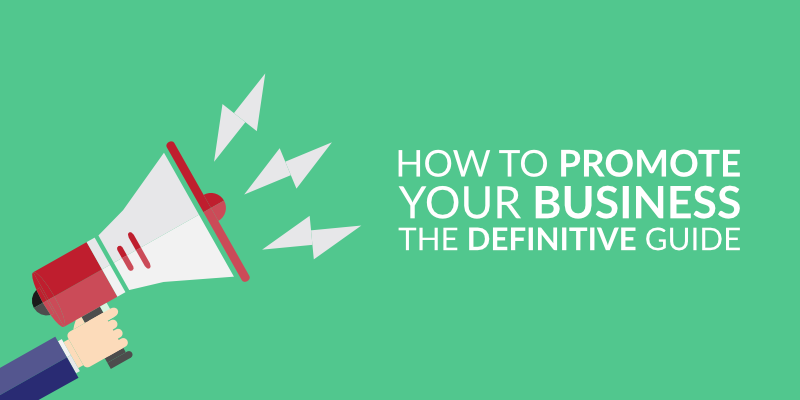
In many ways, the concept of “promoting” your business gives the wrong idea. It implies that your audience are sitting passively at their computers and mobile devices, just waiting for you to push powerfully constructed marketing messages at them.
It’s as if people think that marketing’s like that weird fairground game where you spray water into a clown’s face to inflate a balloon. An active player, and passive objects to be manipulated. But it’s actually not like that.

The irony is that over recent years there’s been something of a revolution in the way digital marketing and business promotion is done, and the way successful marketers think about it.
Table of Contents
- 1 Learn the proper way to think about marketing
- 2 Enter the giving mindset
- 3 Don’t be a travelling salesperson
- 4 Find your smallest audience (then scale it up)
- 5 Find your brand’s community
- 6 How to promote your brand on social media
- 7 Using email to promote your business
- 8 How to promote your business via mobile
- 9 Build goodwill
- 10 Generate user reviews
- 11 Promote your business by becoming an influencer
- 12 The real secret to promoting your business
Learn the proper way to think about marketing
One of the most essential things you can do when promoting your business is to get into the marketing mindset. Sign up to Seth Godin’s email list. He will send you links to every piece he posts on his blog, which is one of the most popular sites on the internet. He won’t tell you how to do marketing so much as he will teach you how to think about marketing. And check out our blog for many more in-depth marketing guides.
Because successful marketing is not just about the practical steps you take to promote your brand, it’s about the mindset you are in. Surround yourself with marketers you trust, subscribe to their newsletters, read their blogs and watch their videos. To act like a marketer you have to think like a marketer.

Enter the giving mindset
When we promote our businesses it’s because, let’s face it, we want to get something out of our customers, our audience, or our community.
We want to receive value from our customers, whilst doing as little giving as possible. This is understandable because we all have to make a living, we all have to sell ourselves, and we all have to get our marketing messages out there in often saturated markets.

However, the irony is… if we spend most of our time in a ‘receiving’ mindset – expecting value to be delivered to us by our passive customers – we will actually get far less than if we were in a giving mindset. A generous mindset.
If you think about it, it makes sense. Imagine being at a party and someone comes up to you and starts going on and on about themselves, their life, their work, what they’re into… and paid very little attention to you. Would you rave about that person to your friends the next day? Or would you complain about having your ear bent for hours without having any fun?
No one likes people who bang on about themselves all the time. It’s the same with brands. You know that, I know that, deep down everybody knows that. But knowing this fact is not enough. We need to put it into practice. And so few brands properly do this. Most brands take more than they give. They may get some short term benefits out of this, but in the long run their customers will get bored and move on to the next thing. To promote your business you have to always be doing something of value to your customers.
Don’t be a travelling salesperson
Nobody likes the traveling salesperson. They’re too slick, too pushy, too enthusiastic… just too much. The more confidence they have in their products, the less we have. Because we’re not stupid.
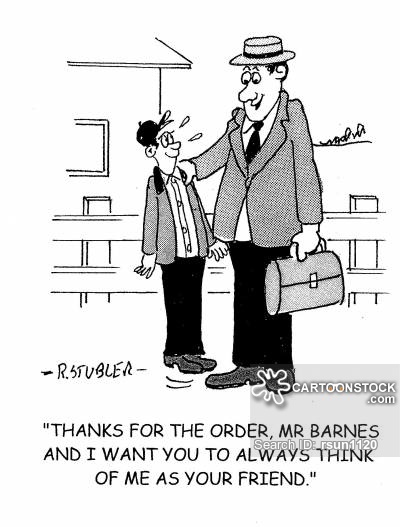
If we treat people as stupid, if we don’t respect their intelligence and their discernment, they will lose all respect for us. And worse of all, they won’t trust us. And they certainly won’t engage with our brand.
Find your smallest audience (then scale it up)
I know what you’re probably thinking; “but I want to reach the biggest possible audience for my brand!”
Well, to reach a big audience, the best way is to start with a small audience. Think of a snowball rolling from the top of a hill to the bottom, gathering more and more snow and getting bigger and bigger as it rolls. If that snowball started at the bottom of the hill, would it end up bigger than if it started at the top? Of course not, because the longer it rolls, the more ground it covers, the bigger it gets. It’s the same with your business. Although you want to get to the end point where your brand is reaching a huge audience, trying to start at the end won’t get you the results you desire.
Get people to know you before you’re famous
There’s another point here. You know those people who boast about being into a band before they’re famous? That’s because they feel a great deal of ownership over that band because they were in the know, and they feel like they backed the right horse (to mix metaphors).
They are the most loyal fans, the ones who spread the word in the tricky early days, the ones that give the band a certain cult appeal before they break into the unforgiving mainstream.
When promoting your business you need to make sure you find those dedicated early adopters to reach out to. If you win their loyalty, and give them ownership over your brand, they will in turn win the loyalty of other people. They will reach out to their networks and lend a foundation of support to your company that will be invaluable in the long run, especially when you ‘go viral’ and your credibility needs to be constantly reaffirmed. This small, close-knit group of super fans will sing your praises, lend you credibility, and help see off your less connected rivals, many of who will emerge from the woodwork when you ‘make it big’.
Find your brand’s community
The internet is not one large audience for you to connect with, it’s many different communities with a broad range of interests, values and ways of communicating, all operating in the same massive space.
The internet is like the world, it has its own continents, its own countries, its own cities, towns, villages and even wilderness. If you were doing a maildrop you wouldn’t be able to send a flyer through every door on the planet, you’d have to take a far more limited and targeted approach. It’s the same with internet marketing.
There’s no value in isolation
In the same way that brands tend to want to take more than they give, they also want to stand in brave isolation, being individuals who stand out from the crowd, who tower above everybody else. But they often end up looking like that annoying person at the party we mentioned above.
Companies often have a one-way relationship with their audiences. There’s no dialog, no real assistance, they don’t seem generally interested in making people’s lives better. And more and more people can spot this. And it’s a big turn off. Never underestimate how discerning people are, because the only person you can fool is yourself.
The beginning of wisdom in marketing is to find the community that will be the most receptive to your brand.

There are so many different social media outlets, and each have their own functionalities, their own ways their users like to engage with the platform, and their own unspoken rules and conventions that you should respect if you use these platforms.
Twitter is different to Facebook, which is different to Pinterest, different to Instagram, different to Snapchat, different to Reddit, and so on.
We’ll look into specific social media hacks you can use shortly, but let’s first take a look at some general rules of thumb.
Standalone posts
Standalone posts are essentially passive posts that you publish to your social media feed. They can take the form of updates about what your brand is up to, or comments on topical events, announcements of discounts and giveaways, new products, and so on.
They tend to be read by people who follow you and see your post appear in their timeline, or by people who seek out your profile and scroll through your posts to see what you’re all about or catch up with you.

The amount of people who see your standalone posts will often be a small fraction of your followers, and a small fraction of your overall audience.
That doesn’t mean that these post are ineffective or have no value, far from it. Standalone posts are essential for making your social media presence of value to your audience. Your dedicated followers will pay attention to them and often share them with their friends. But you can’t just rely on these types of post to grow your social media presence.
90% of the social feeds of all businesses are made up of mainly, if not entirely, standalone posts. And 90% of those posts get zero attention, zero engagement.
To properly promote your business on social media you need to have a healthy mix of different types of posts.
Engaging posts
Engaging posts are posts that seek to actively engage individual users in an attempt to reach out to them and their followers. If I leave a reply to a user’s post and that user has tens of thousands of followers, my post will likely be seen by hundreds, maybe thousands of people.
This is especially useful if I don’t have that many followers myself. Engaging posts are essentially an attempt to leverage the audience of other social media users. As such you should be careful how you use them… if people sense that you are taking advantage of another account’s popularity they will quickly call you out on it.
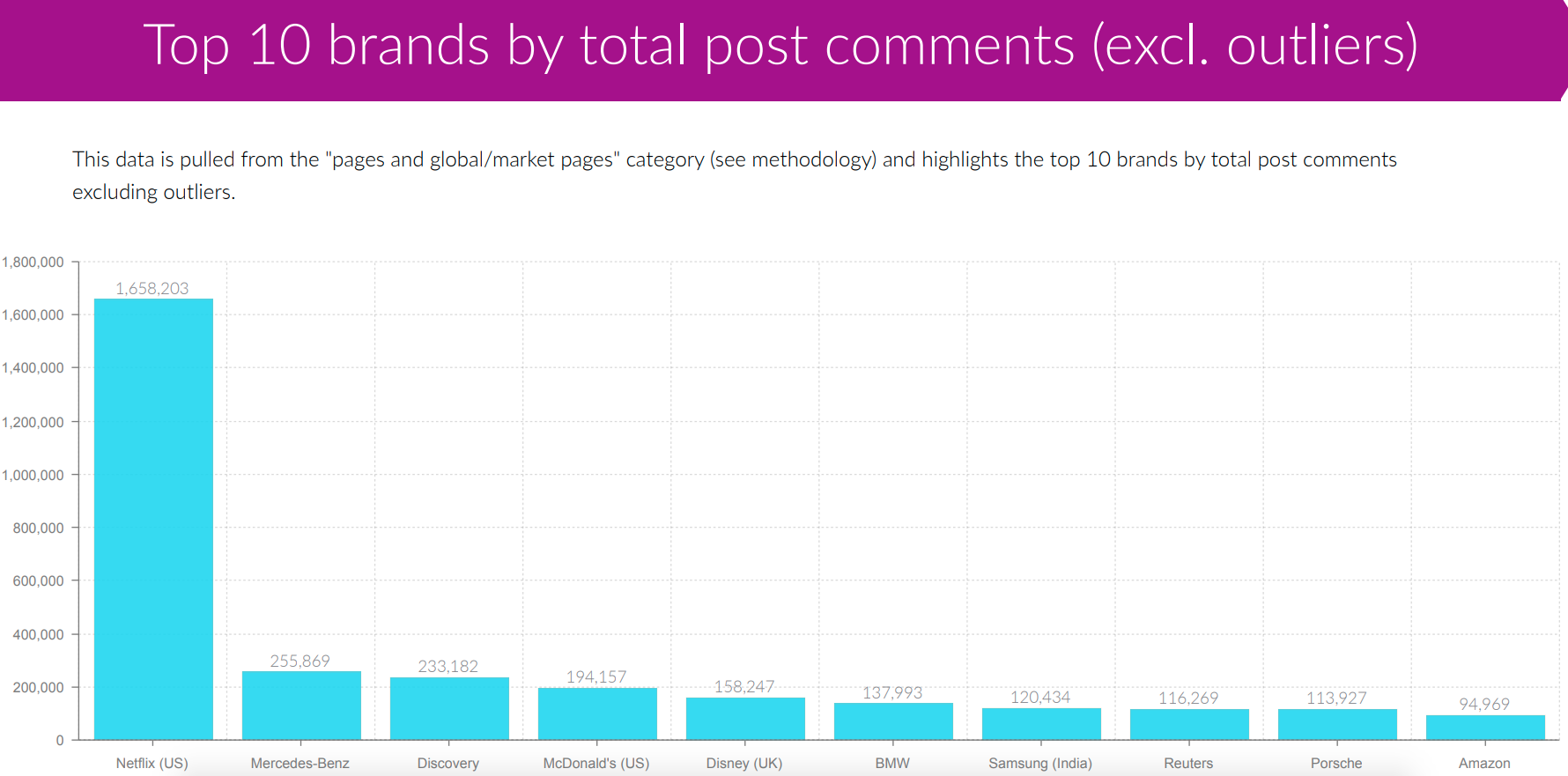
Here’s what you should post on social media
The real trick is to be completely natural in the way you use social media. Don’t post just to fill up space, make sure you have something to say. And have a decent mix of content. Such as:
- Updates on what your company’s up to
- Comments of relevant news and current affairs stories
- Share how-to blogs and videos relevant to your niche
- Repost high-performing content from other accounts and add your own comment so that your voice shines through and you become part of the conversation
- Search for hashtags relevant to your niche; like and comment on posts that you genuinely like or have something to contribute to
- Make use of any opportunity to add media to your post such as images and videos.
- Use hashtags selectively; they are a good way to organise content into topics, but the days of spamming hashtags are over.
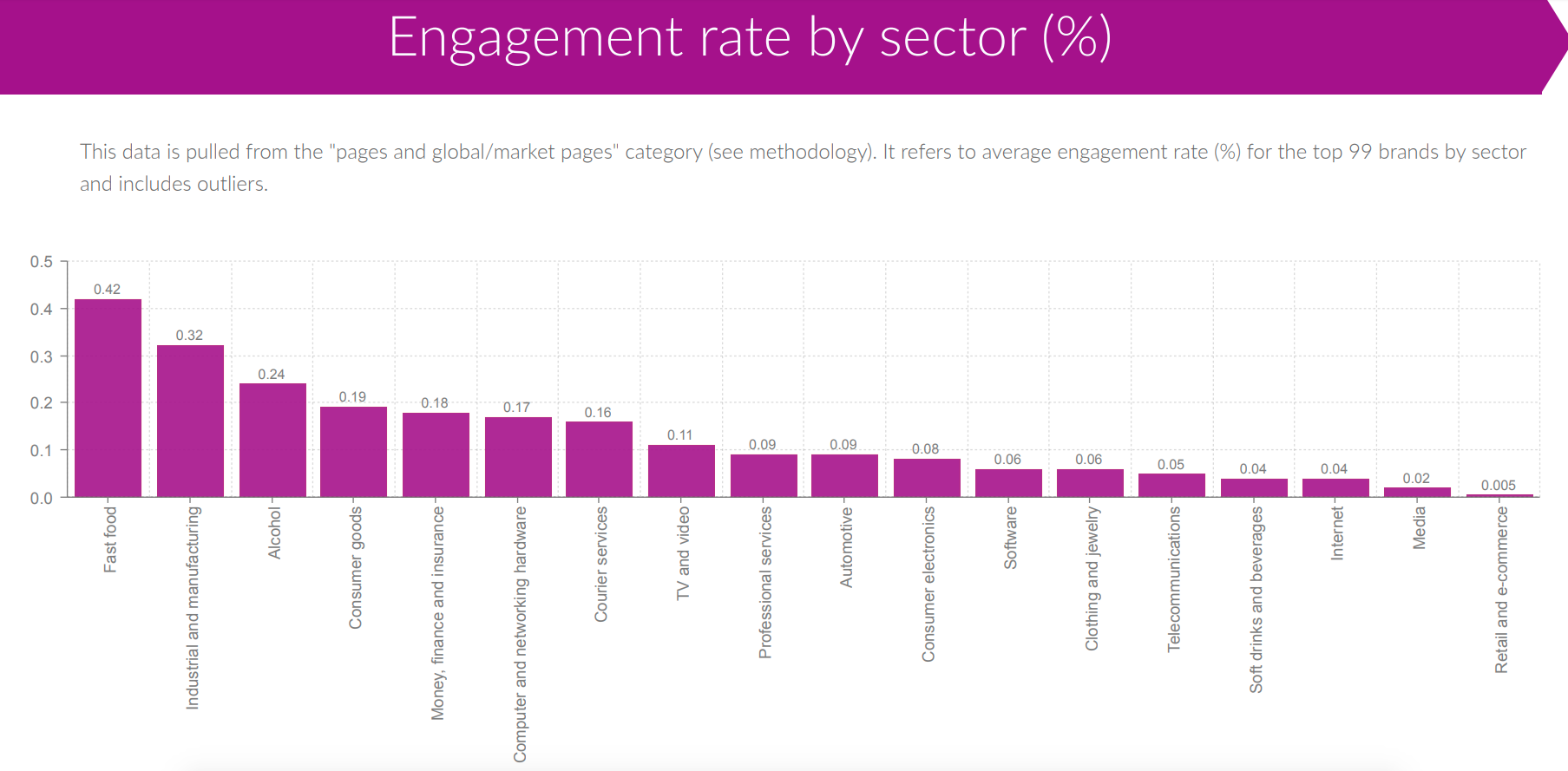
Each social media platform attracts a different demographic and works in a different way.
- Twitter is for quick fire, topical and very short posts
- Facebook is for talking to a narrower community of friends, family and colleagues
- Instagram is dedicated to photos and videos and is most suited to visual content
- LinkedIn is for professional networking
- Tumblr is very much for dedicated fans, rather than your average social media user (your dad might have a facebook account but he probably doesn’t have a Tumblr account).
- Snapchat is for a typically younger audience and has a focus on fast moving, personal conversations that don’t leave much trace after they’re sent.
- Pinterest is vastly dominated by women users (81% indeed) and is used by 30% of all social media users. Like Tumblr it’s fairly incomprehensible to anyone who doesn’t use it but it’s basically a handy way to save/bookmark images found online.
- YouTube skews more towards men and is more popular amongst millennials than traditional TV. How-to videos, product reviews and live streaming videos are very popular on it.

Whilst many brands have a presence on most of the major social channels, effective brands know to prioritise the ones that work the best for them.
As with all things you are far better off selectively picking the channels that work best for you and trying to build them in a consistent way.
For example, although Seth Godin does have a Twitter account, he doesn’t use it for anything other than posting his latest blog posts. He puts most of his focus into his blog. As a result you just need to type Seth into Google and his blog will be the first result.
Seth chose blogging because, quite simply, he enjoys writing. It’s the right choice for him. If you’re more shoot-from-the hip you may find Twitter is the best for you (this is more relevant if you’re a content creator, sole trader or very hands on CEO).
But the point about choosing a social media account to promote your business is to play to your strengths. If you create lots of visual content Instagram might be your priority, if you have charismatic team members you might want to to regularly post videos on YouTube. If you’re building a community, Facebook might be a great option for your brand, if you have an active user base consider using Reddit.
In the modern social media landscape, your options aren’t limited by your specific load out of niche skills anymore. With tools like Picsart, for example, creators are able to participate in effortless content generation and make high-quality social media content, sentences, and paragraphs. You can even create and edit your own images. So really, the world is your oyster.
How to find your audience on social media
But there is another major consideration when choosing a social media outlet. And that is, where are all your audience hanging out?

If your demographic is the over 50s, they might be most concentrated on Facebook.
If you’re targeting teens, SnapChat might be the place to be.
The only way to really find out is to do your own research.
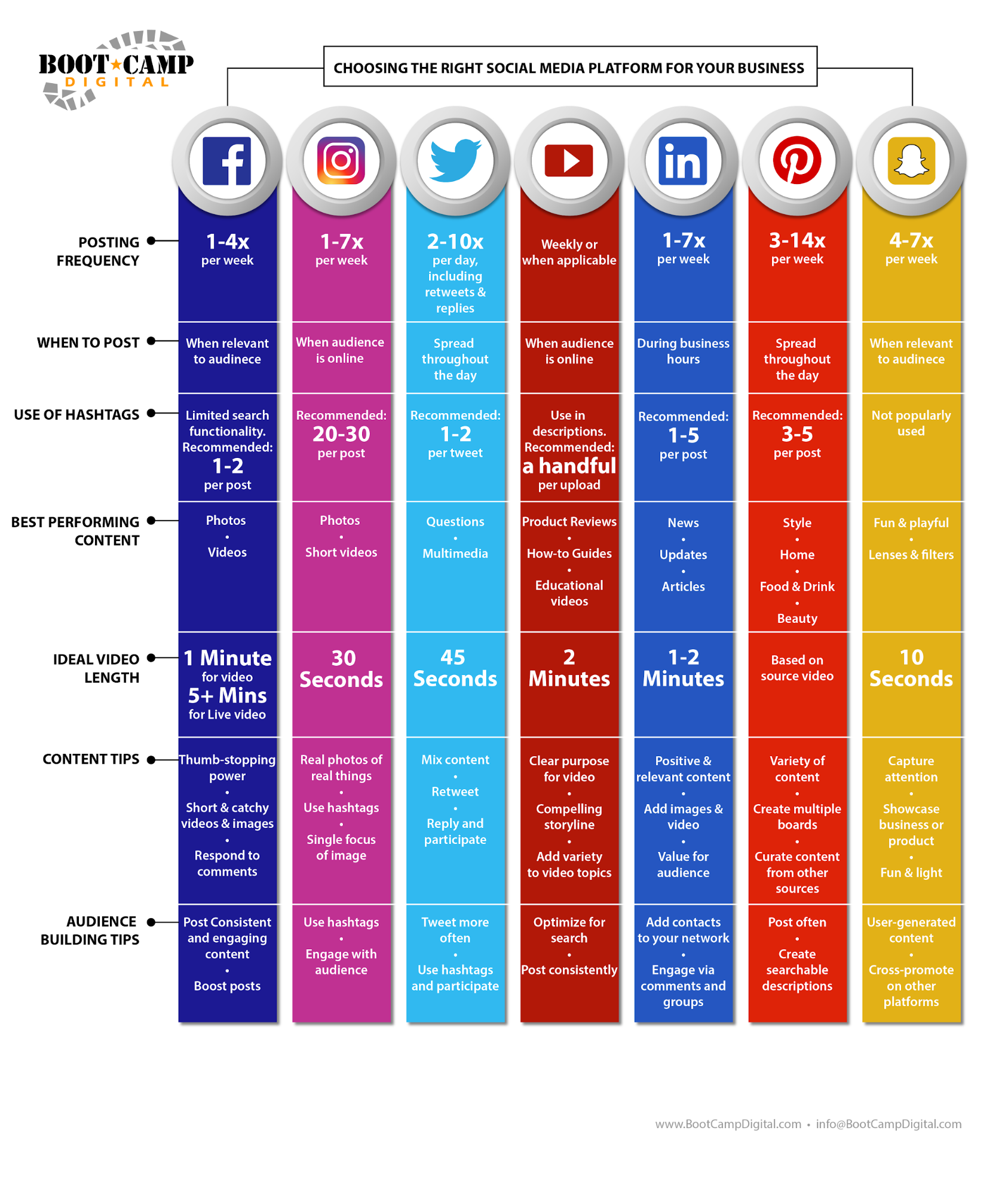
Search for brands similar to yours and look for links to any social media channels.
If your audience are music fans then YouTube, Soundcloud or Bandcamp are probably the best places to start looking for them.
If your audience are into beauty and fashion then instagram, YouTube and Pinterest are worth checking out.
But you won’t really know where your audience are until you actively search for them.
Another option is to check out your rivals and see which social media channels they use.
At the end of the day you have to make a decision that feels right for your brand and give it a go. It probably won’t be six months until you really know which channel to use, because building up a following, and seeing results, takes time.
This is actually a trick question. Musical sensation Lin-Manuel Miranda posts pretty much on an hourly basis, and people lap it up because he’s a super celeb in the world of musical theatre.
Gnight.
Let others rush in with the instant reaction and the FIRST FIRST FIRST;
Process at your speed.
Say exactly what you mean,
Engage however you like.
It’s YOUR timeline,
It’s YOUR time.— Howl-exander Hell-milton (@Lin_Manuel) October 4, 2018
Country music musician David Crosby (of Crosby, Stills and Nash fame) is known to answers pretty much any question his fans ask him in the form of often one word retweets.
Sometimes https://t.co/YqAVhOLJUl
— David Crosby (@thedavidcrosby) October 5, 2018
By contrast, fast food brand Dominos Pizza tend to post irregularly. Sometimes multiple times in one day when they have something to promote, and sometimes they may go days without tweeting.
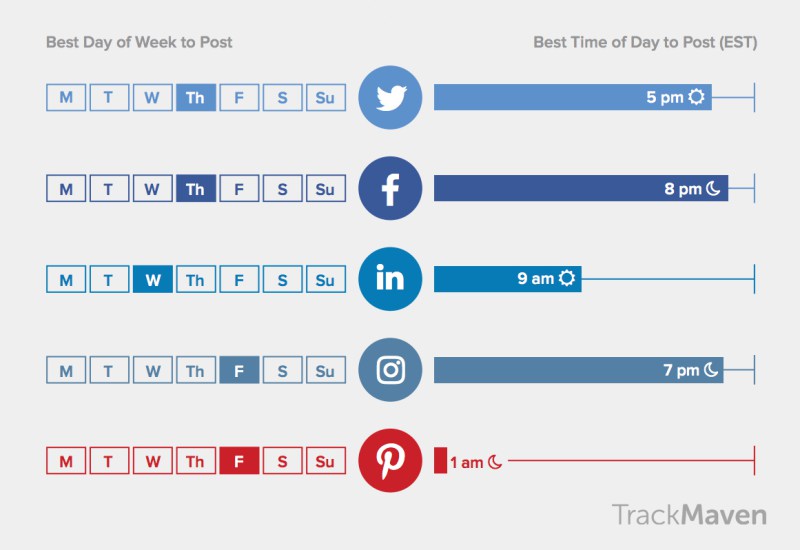
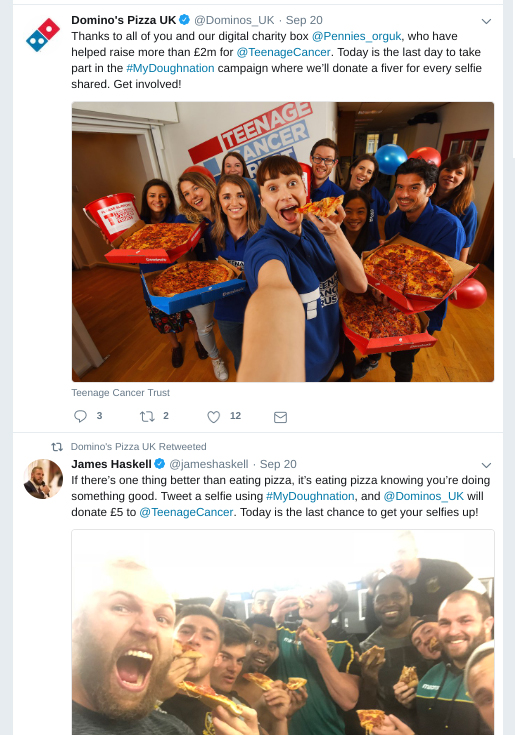
Here’s when you should really post on social media:
- When you have something to say
- When you have deals to promote
- When you launch new products or services
- When you have a live event coming up
- When you want to manage public expectations
- When you need to beef up your PR (or manage a crisis!)
- When you have this fantastic idea for a post that just might go viral!
- When you want to connect with your audience
- When you want to engage with a new community
- During the typical active hours of your target audience
- When you feel inspired to
- When you want to try something new
- When you feel your audience hasn’t heard from you in a while
- When there’s a public event or occasion you want to talk about
The fact is, what you post is much more important than when you post and quality is always better than quantity. It’s better to be consistent than to post frequently.
Each social media platform has its own times and rhythms to posting and it’s own conventions. LIke with any community, you need to hang around a lot to pick up all the nuances of how to be part of it. It’s the same with social media. It’s probably not a great idea to just barge into a new social network you have no experience of and expect for everyone to welcome you with open arms and to lap up your content.
Do some social media surveillance
Search for your top 5 competitors. Make a note of what social channels they use.
Scroll through their feeds for each platform, making notes (mental or physical) of how often they post, what type of content they post, the language they use, how they engage with fans, how they handle criticism, the way they deliver customer service. On each of these points, ask yourself if they are responding in a way that resonates with your own brand values. You’re not only looking to see what to do, you’re also looking to see what not to do.
The next step is to take a look at the people who follow your rivals. How many followers do they have? Scroll through and maybe pick 5 followers out and take a look at their feeds. Are they big hitters, or ‘average’ social media users?
What sort of things do they post? Are they positive or negative? What sort of values do they demonstrate? What other brands do they engage with?
You’re trying to get a feel for your rivals and their audiences, how they communicate, and how positive or negative the interactions in general are.
If you find there is a discussion going on about a relevant topic, have a go at replying. Don’t be pushy, and be respectful that you’re engaging in a discussion on somebody else’s’ turf. Offer genuine, interesting and helpful solutions or insights and gauge the kind of response you get. Are people responsive and constructive, or are you receiving any hostility? Get a feel for the best way to engage with your target audience.
The point is to try out a bunch of different ways to engage with your audience on social media and adjust your behavior based on how well it goes for you. If something works, do more of it, if it doesn’t work roll it back. Don’t be afraid to experiment, just make sure you actually learn from your experiments and use the data to improve.

There’s no doubt that organically building engagement on social media is a great way to promote your business. But as with all things you want to use a mix of different tactics rather than just relying on one thing.

Paid ads are a great way to give you extra reach and impact on social media.
Again, it’s a great idea to do research to look at high performing examples in your niche.
For example, Dollar Shave Club are very good at running simple yet effective ad campaigns that get results on Facebook.
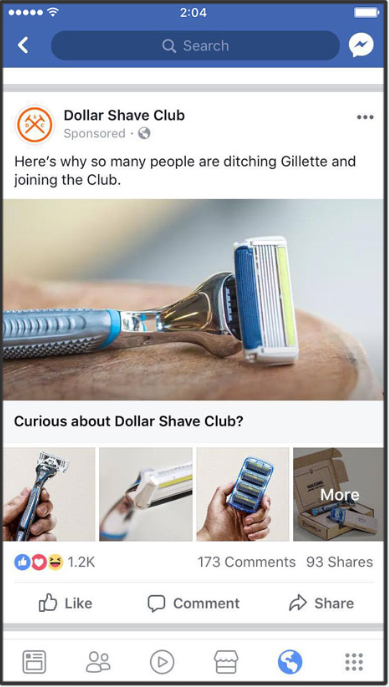
The above ad makes good use of photos to show off their products and has simple yet intriguing copy to encourage users to click and find out what makes them different from their mainstream rivals.
Target the right demographic
It’s important to narrow your audience down as much as possible so that you don’t waste money showing your ads to people who aren’t going to care.
Dollar Shave is a men’s grooming company so they targeted men aged 18-65 in the US (where they’re based). There was obviously little point in targeting, say, 13 year olds who have no use for shaving paraphernalia.

You shouldn’t underestimate the importance of targeting. The temptation to cast your net wide often means that the people who really will benefit from your ads never see them. Have the discipline to narrow your audience down. Most social media ad platforms let you target audiences by a range of factors including demographic, location and interests (Facebook and Instagram are particularly good at this).
Test your ads
Unless you are a fresh faced startup you’ll probably already have some experience of running ads. Many brands don’t take the time to test ads because they never seem to find the time. But this is a false economy. If you have any data from previous ads you can look at, take a look at what performed well and what didn’t.

There are various ways to test social media ads.
You could run two ads with the same content to two distinctly different audiences who might be interested in your brand. Which demographic performs better?
When testing, only change one element of an ad you’ve already run and see if it performs better or worse. Don’t change more than one thing about the ad or you won’t be able to tell which change was effective… or disastrous.
Using email to promote your business

Build a “permission” list
There are a million ways to build an email list, and you can find lots of tutorials online. However, there’s only one approach that really matters. It comes from Seth Godin’s concept of ‘permission marketing’. This is an approach that says that you have to earn permission to be in touch with your prospects. This goes beyond simply saying “don’t buy email lists”. It’s much deeper than that.

In a nutshell the idea goes like this:
Today consumers have more choice and are more informed than ever before. If you truly dominate your niche and have no or few competitors then congratulations, but why would you be reading this article if that was the case?
Moves like the GDPR privacy legislation and a growing awareness of the value of consumer data also mean that today consumers have more rights than ever before.
This can seem daunting and like it’s a roadblock to promoting your business, but it’s not… for this very important reason:
Trust, confidence, and satisfaction are essential elements you need to earn from your audience. Because promoting your business is not just about getting your brand out there, it’s about meeting and serving an audience that don’t have to be there. Would your audience miss your content if you went away? That’s the sign of having a true permission list.
So how does this apply to your promotional email strategy?
Email is one of the easiest, quickest and cheapest ways to reach an audience in a very personal and intimate way. But the flip side of that is it’s also very easy to put people off if they feel you have wormed your way into their inbox or are not delivering a satisfactory service.
You should think about the purpose of your emails.
To update people about new produces? Give greater insights into what your services can do for prospects? Update about exciting events, discounts, competitions and offers? Maybe you provide tips or analysis on a certain topic, or run a lifestyle newsletter. Whatever it does, it has to be something that adds genuine value to the lives of your readers.
Again, this is an area where it’s vital to do your research before designing your email strategy.
What do other brands do? What works? What doesn’t? Where could you do it better? Where’s an opportunity to stamp your own brand identity on your email process?
Start simply. A free email client like like MailChimp is the perfect starting point for most business, but feel free to shop around.
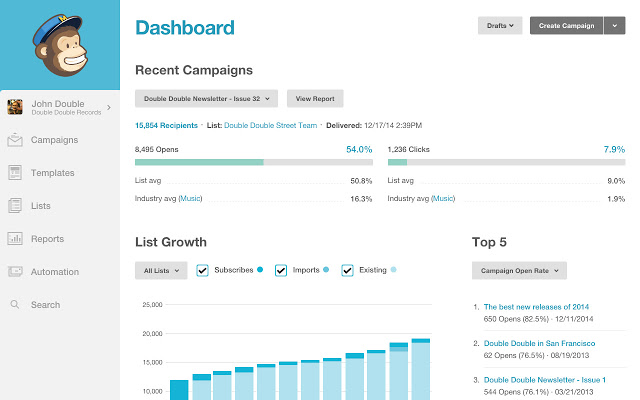
And your email doesn’t have to be a masterclass of design and image. Most people write and receive plain text emails, it’s what we’re used to and it has an intimate feel… like someone is talking just to you. This could really work well for your business and it means cutting down on lots of formatting and template design work.
On the other hand many brands use well designed templates to really make their brand stand out. It’s about what works for you, and also about how many resources you can allocate to your email system.
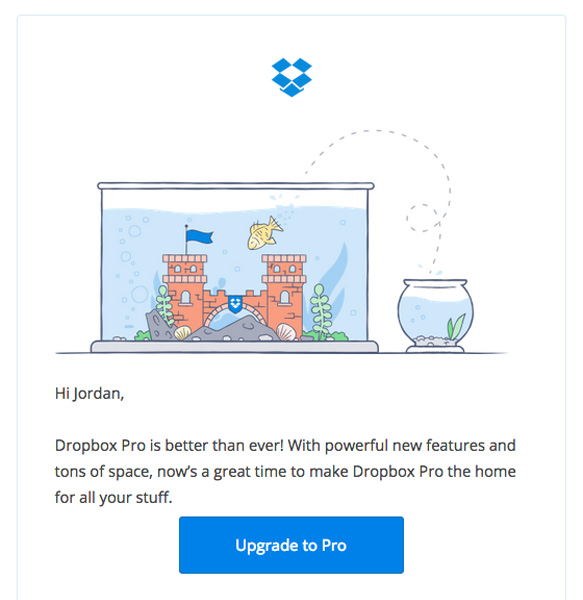
Source
There’s no right way to do it and a process of trial and error is inevitable. But as with anything, content is king.
Be genuine, generous, and human
Many brands see email as an opportunity to thrust as many product details at prospects as possible, smothering their copy in sales jargon and marketese.
Quite simply, they are far too desperate to sell to every prospect, and that can be sensed by consumers. Consumers want to be charmed and wooed gently and to feel no pressure to buy. If they don’t they’ll unsubscribe from your emails, or just ignore them.
Don’t be afraid to lose subscribers. There’s the old saying “I wouldn’t want to be part of a club that doesn’t want me as a member.” Well it could be rephrased to read “I don’t want subscribers who don’t want to engage with my brand!” Ok, it’s not as snappy but the point is that it’s more important to have a short list of dedicated brand devotees than to have a long list of people you’ve likely never spoken to, met or heard from and who probably don’t even want to be there. In fact, you probably don’t even know how they got on your list in the first place (though in the days of GDPR this is no longer an option).
There’s only one formula for creating the perfect email content.
You have to be genuine, generous, and most of all you have to be human. It’s that old adage, “just be yourself”. Well, this applies to brands too, from large corporations to smalls boutique businesses and sole traders.
To master any element of business promotion you need to be a diligent student of that channel.
Sign up to as many email lists as you can, particularly from similar businesses to yours. Pay attention to what they do and learn from it, adapt it and put it into practice in your own marketing.
Manage expectations
Because email is such a personal way to connect with people, and can very easily be seen as distracting, invasive or just plain annoying, you need to manage expectations of what people will get.
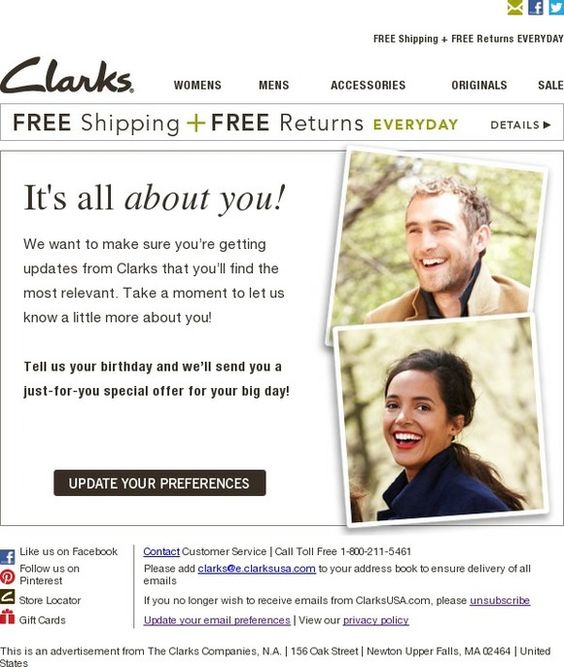
We’re talking about the frequency with which you send emails. The length and format of said emails. The type of content they contain.
If your subscribers know what to expect, it can’t annoy them when it happens. In fact, they’ll welcome you coming along to brighten up their life.
What’s in it for me?
All marketing is about effectively answering the customer’s age old question “what’s in it for me?” to your client’s satisfaction, not your own.
Simplicity is key here. Offering a 10-20% discount on first purchases, followed up by occasional sales offers to keep people’s interest is a no-brainer for most brands.

You can use emails to announce competitions and to get your customers’ opinions on how to improve the work you do.
Make it easy to reply
If there’s one lesson to learn about how to market your business it has to be that marketing is a two way street. It’s about communicating back and forth between your brand and your prospects and customers.
Emails are fundamentally about two way communication, because although you can bulk send emails they are each going to a unique person with unique interests and needs and each of whom presents a unique selling opportunity… if you get it right.
That’s why it’s so important that your prospects be able to reply to your emails.
You should actively encourage this in your emails by asking questions directly to the user. A good question is always “what’s your biggest challenge in [email topic]?” You’re giving people a personal opportunity to dialogue with your brand, and that can be huge. Many large brands struggle to scale such communication, but if you’re a smaller brand this can actually play to your favour. The smaller your team is the more likely it will be that your team members have a holistic, hands on experience of your brand and your niche and can give informed answers to queries and point prospects in the direction for solutions that best fit their unique needs.
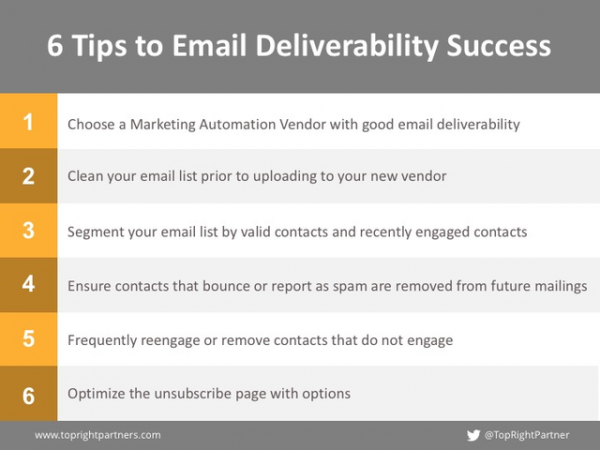
If you run a beauty salon, you could craft a series of emails tackling much asked about questions like how to paint your nails, makeup application or picking makeup colours.
A classic content marketing technique is to give people all the expert advice needed to provide their own solutions and then offer to perform the service for them for a modest (or not) fee.
But make sure you’re straightforward, don’t make problems seems harder than they actually are… just make it known that all solutions are done best by people with lots of skill, dedication and experience (that’s you, so make sure you brush up on those things!)
How to promote your business via mobile
Most people browse the web via mobile these days. Think about it, we have our phones on us all the time, even when our work computers are locked down from the outside world, but how often do we spend at our desktops and laptops? It’s much less time.
Mobile is a different experience
Many brands think that mobile is like regular web browsing, just smaller, but that’s far from the truth.

For content, sites and apps to work on mobile they need to be much simpler and much more streamlined.
Pages need to be stripped down so they display the most relevant content, and menus have to be designed for maximum ease of use on a mobile device.
Make sure your website works on mobile
If you are using a template from WordPress or another website hosting platform, make sure the template is optimised for mobile.
Do a quick check for mobile friendliness on Google. If you’re not optimised it’ll give you pointers on what to do.
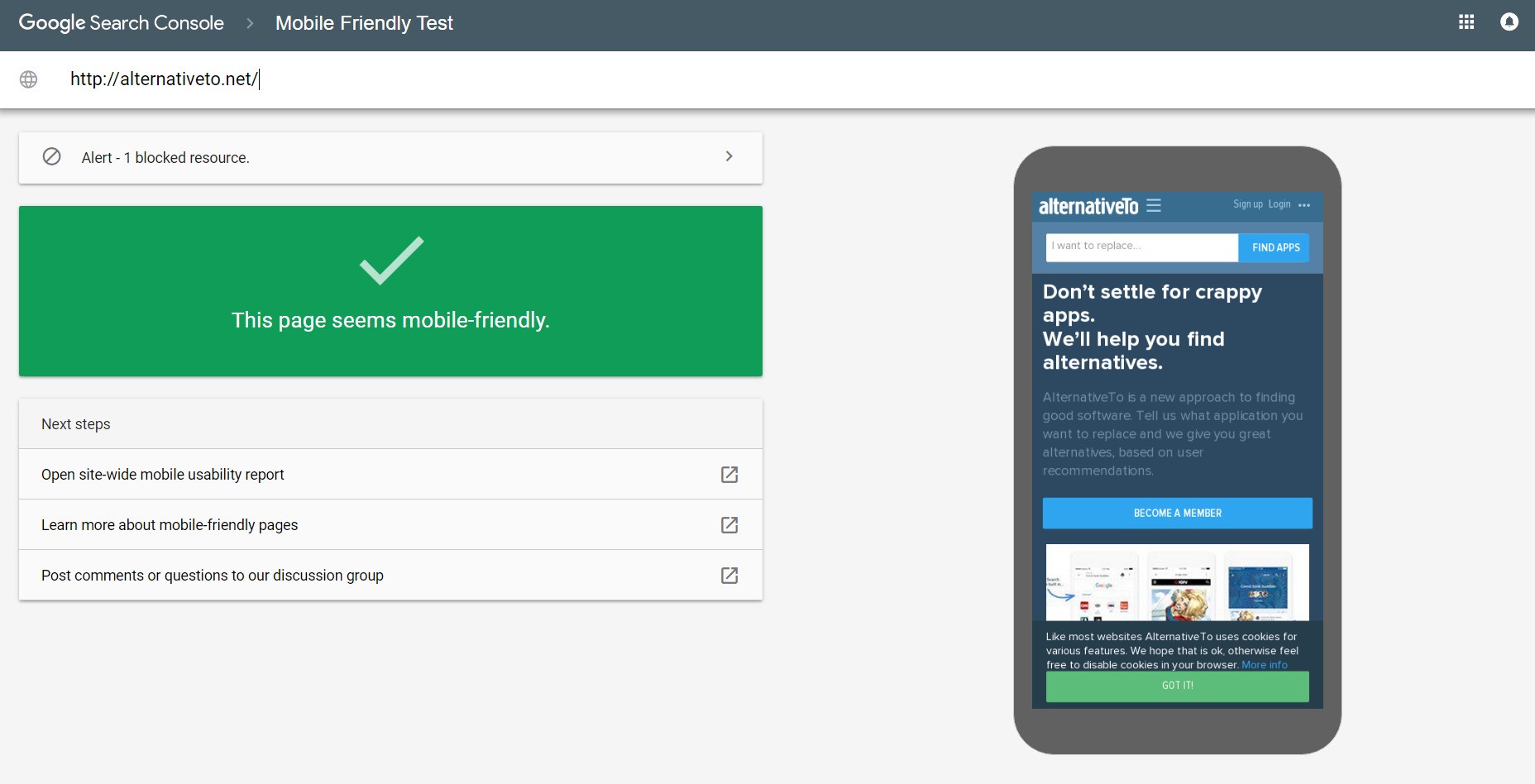
If you work with a web developer, speak to them about making your site work optimally for mobile.
If you don’t do this it’s like having a shop store where half of the doors get stuck all the time… think about the traffic you’ll be losing because your mobile experience is not up to scratch.
Make a list of all the mobile contact points between your business and your audience:
- Mobile app
- 3rd Party app directories like Treatwell, Zoopla, etc.
- Social media platforms
- Phone number
- Text services
Once you have considered all the ways people can connect with your brand (and you with them), test out the mobile experience for each connection point.
For example, sign up to your newsletter via your mobile. Use the links on your site to do this… explore your whole customer onboarding experience where relevant and do it all via your phone. This will give you direct experience of what it’s like to engage with your brand via mobile.
Your starting point should be crafting a user friendly process for reaching out to your audience by mobile.
Then you need to look for areas where you can put your best foot forwards when promoting your business by mobile.
Use an app to promote your business
For example, design an app with an app builder like AppInstitute, make it live and start promoting it to your networks. An app can be a great conversation starter with your audience. You could send out a note to your email subscribers asking them what features they’d love to see on your app, and how you can make it work best for them.
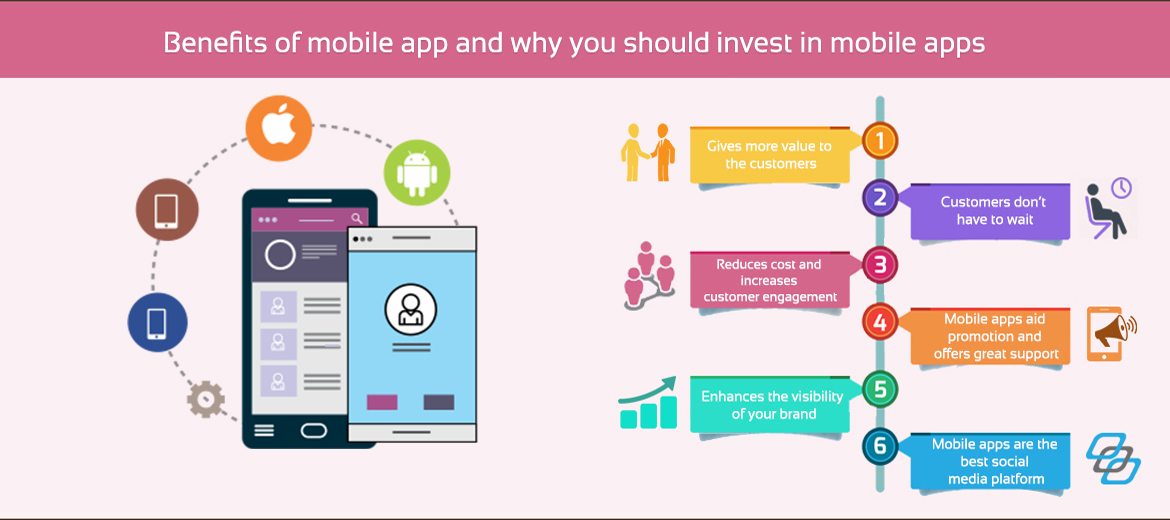
Really make sure you genuinely engage your audience using a reliable Customer Feedback Software. There are few things better at promoting your business than taking on board customer feedback and then implementing it.
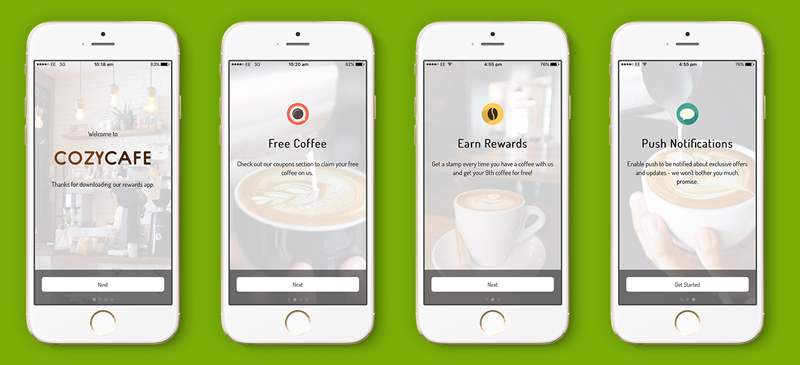
You don’t have to implement every suggestion people make, you just need to show you’re truly considering how to create a great mobile experience for your audience. This won’t just deepen your relationship with your audience, it will make your brand better.
Streamline your booking process
An app helps you streamline the customer onboarding process and ensure a consistent and easy interface that your customers can use wherever they are, any time of day.
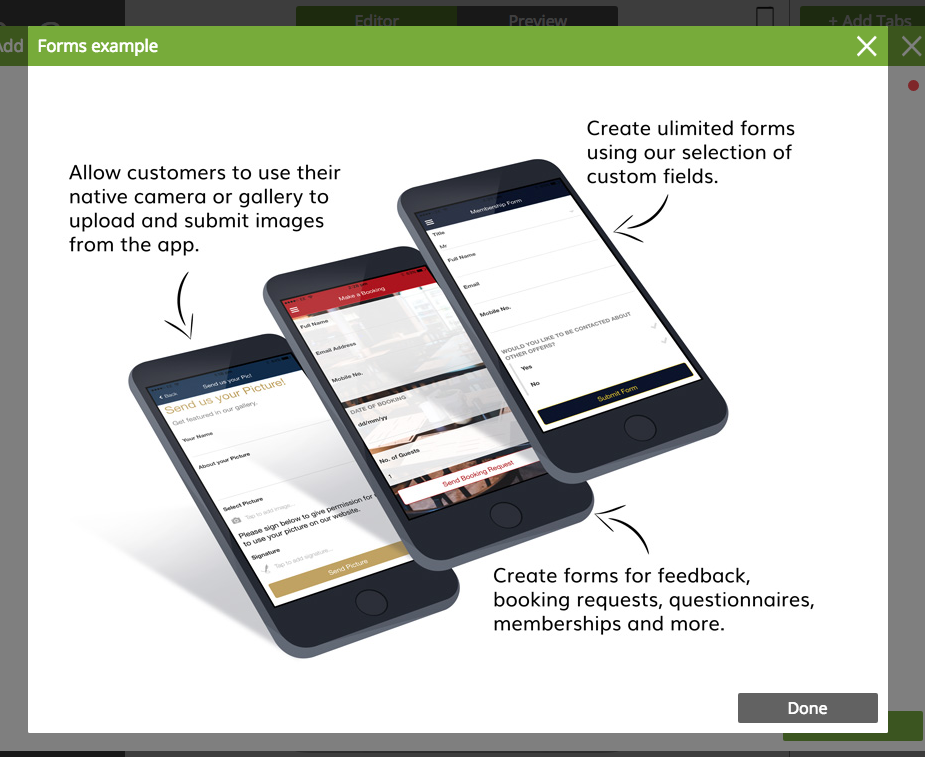
You can use an app to
- Create a diary displaying public events
- Allow customers to schedule appointments in an in-app diary
- Use geolocation to trigger booking reminders and push notifications when customers enter specific locations
- Send push notifications to keep your audience up to date
- Book appointments and buy products via your online store
- Create a loyalty system to encourage customer retention
All of these things aren’t just ways to deliver a fantastic customer experience, they are ways to actively promote your business.
You can also use your app as a reason to be in touch with your customers.
After they make an appointment or enter your email system you can send them a welcome email including a link to where they can download your app. Entice them in with the promise of discounts. Once they have downloaded your app you have another avenue through which to reach your audience.
Build goodwill
There is no more powerful marketing technique than word of mouth.
The thing about word of mouth is that you can’t be in control of what people say, of how kind or enthusiastic, or polite, they are. The only way you can control sentiment is by making sure everything you do is the best it can possibly be. But the way you deal with setbacks and overcome challenges also helps. A customer might be able to tolerate a faulty product if they have top notch customer support and an earnest attempt to put things right.
For example, when friends of mine had their RyanAir flights cancelled, they didn’t just get their flights rescheduled for free, they also got £160 worth of free flights.
So it’s by making sure you are innovative, attentive, and generous that you will generate goodwill towards your brand, even in the hard times.
That’s a long term process. But there are other things you can do in the here and now to reap the rewards of goodwill.
Generate user reviews
Encourage users to review your business.
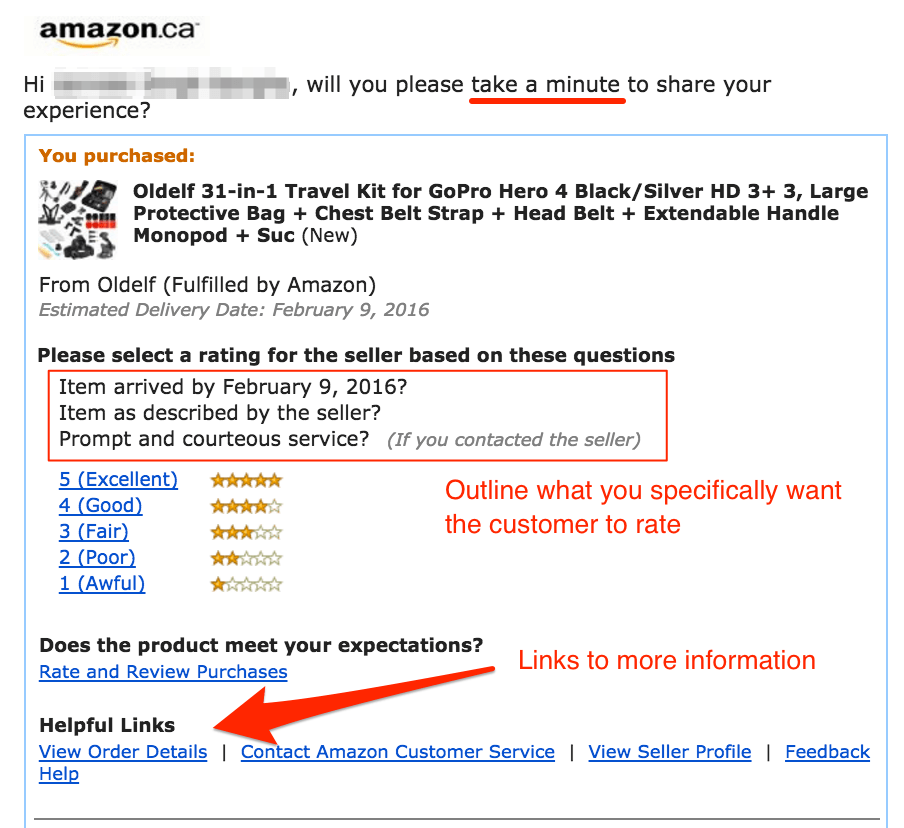
Setup your Google Business page and you’ll be good to go with getting reviews. Having lots of positive reviews will increase the amount of people who click on your page when it appears in search and this will in turn improve your page ranking.
Create emails to automatically send a few days after an online order is delivered or a customer has had an appointment with you. Encourage them to review their experience.
Generate word of mouth
You can also encourage word of mouth to spread by giving customers a reason to spread word to their friends on social media.
Offer to enter people into a competition in exchange for liking, retweeting and/or tagging people in your social media posts. This works particularly well on Facebook but also works on other social platforms.
Use brand ambassadors
Like with reviews and word of mouth, brand ambassadors are a fantastic way to leverage the audience of influencers and utilise the goodwill towards another established brand to show your company in the best light.

To get brand ambassadors, search for people who review or talk about your niche products on social media. YouTube and Instagram are good places to look for this.
You’d ideally want someone with at least 1000 engaged followers who consistently produces content relevant to your business.

Make a list of people you’d love to promote your brand and reach out to them privately through their prefered contact point.
A beauty salon could send free products to a makeup reviewer, or even invite them in for free treatment in exchange for a shoutout.
Very few influencers will say no to a free product or service as long as it doesn’t compromise them in any way.

Promote your business by becoming an influencer
Influencers are people who lead relevant, topical discussions in your niche or who contribute to those discussions in an impactful way.
This is a particularly useful promotional strategy to leverage for sole traders, entrepreneurs or any other business people who are passionate about what you do.
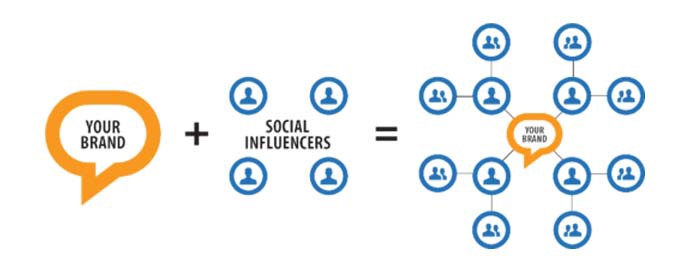
It costs nothing to have an opinion and it can actually pay off in terms of attracting goodwill for your brand and bringing more prospects and customers your way.
To become an influencer you need to go where the conversations are. Find the most appropriate platform for this. You could, for example, use Reddit which offers a range of niche forums, or Quora where questions are asked and answered on every topic under the sun.
It doesn’t really matter what the platform is, the thing is to get involved.
As with any conversation, spend a respectful time reading and listening to people’s opinions before contributing yourself, and be aware of the various rules of behaviour which can often change depending on what sort of thread or subreddit you are on.
Only contribute…
- When you have something to say
- When you are sure it will contribute positively to the discussion
- When you spy an opportunity to add value
- When you notice an opportunity to talk about your services in a non-salesy way
When appropriate leave a link to your brand in discussion threads, but check that this is allowed on the platform. This will actually improve your SEO because being linked to from high authority sites shows search engines people are interested in your brand.
Guest posting
Guest posting is like a step up from the influence technique we showed you above. It’s an opportunity to have your insights aired on a blog or social media platform that complements your one but doesn’t directly challenge it.
Guest posting gets you backlinks that search algorithms use to rank sites.

It will bring you traffic by pulling in another brand’s audience.
It will lend your brand prestige by being associated with other high value brands.
Run a webinar
A webinar is a great way to get in front of an intimate live audience to teach them valuable insights whilst encouraging them to engage with your brand and enter your sales funnel.
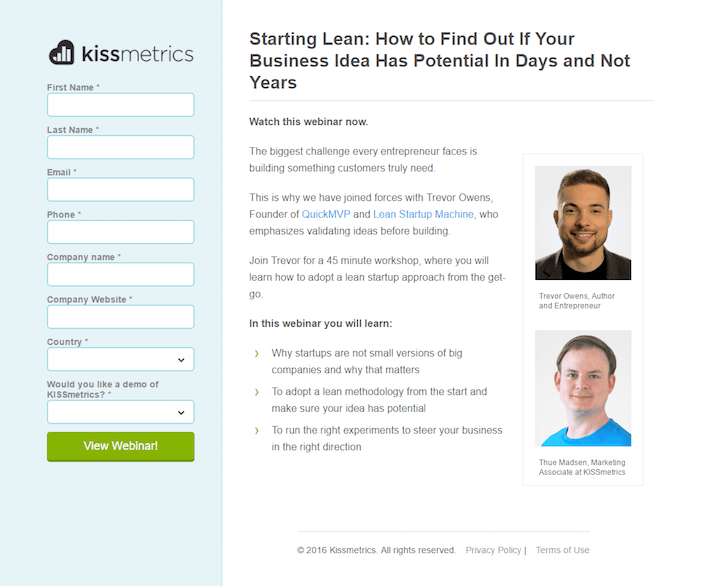
A webinar is not a glorified sales pitch, by the way, it has to be a genuine learning experience offering direct, free value. If people stay to the end you can ask their permission to learn more about your services in a non pressured way.
Beauty salons could run a workshop about how to use certain beauty products or achieve a certain style or technique.
An advertising agency could run a workshop on insider SEO secrets. A guitar teacher could offer an introduction to lead guitar, a wellbeing specialist could run a mindfulness workshop, and so on.
Run competitions
Every business has some free stuff they can give away. And nothing generates goodwill quicker or with less relative effort than a giveaway.
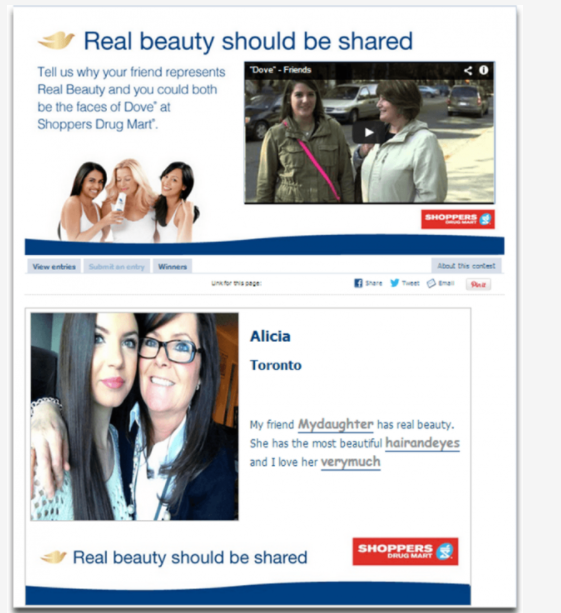
Whether it’s a free style consultation, Skype call, ebook, email series, product, service or so on, think about what you could give away that would mean a lot to your audience, but won’t cost you an arm and a leg.
Skill based competitions
The entrant has to make some kind of effort to gain entry to the giveaway. These have the benefit of motivating people who love to create, but can be a barrier to entry for others. But that’s fine, just vary the types of competitions you run and see which ones work the best.
You could run a caption competition or photo contest, if you’re a musician you could give away a free album to the person who does the best YouTube cover of your song. A restaurant could offer a free meal to the best instagram photo of their dishes, and so on.
The other way to go is with a random draw competition.
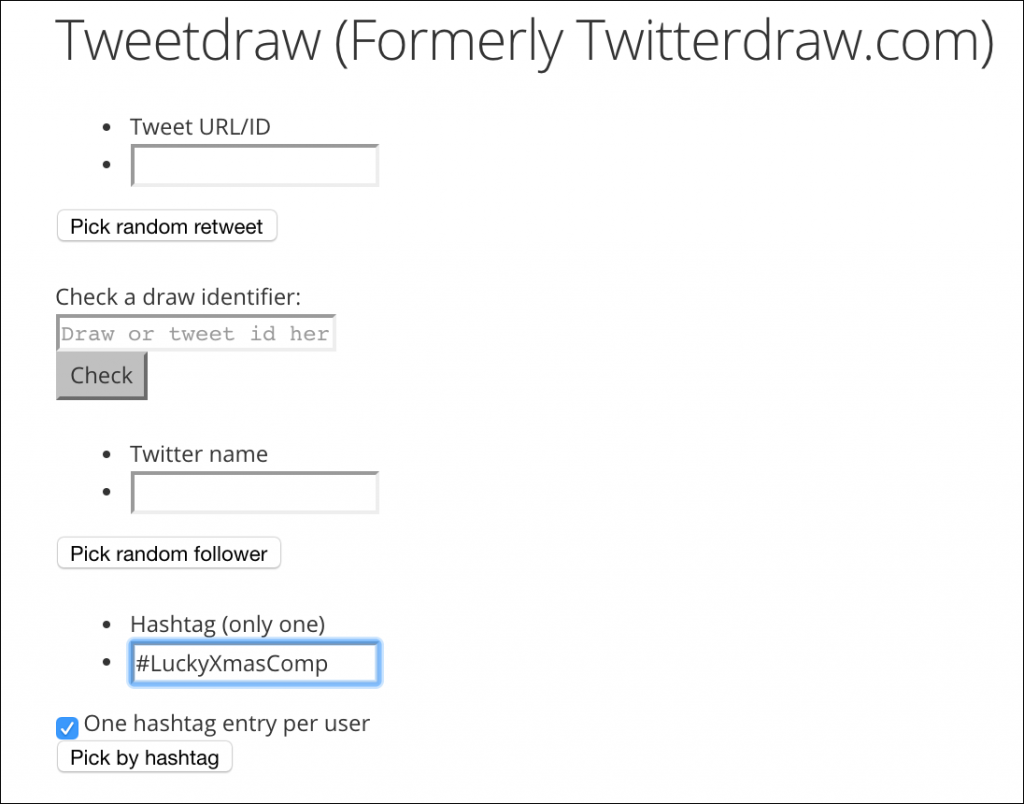
This could mean randomly entering names into a hat of everyone who leaves a comment on the contest thread, or so on. There’s plenty of online tools out there to facilitate this.
The real secret to promoting your business
The truth is that promoting your business is about being interested and engaged with the marketing landscape around you.
That means being open to trying new ideas when they come along, relying on classic methods like email and not putting all your eggs in one basket.
At all times think about where your audience are, what they’re doing, what they need in their lives and how you can help. The more involved you are in the wider community for your niche the more natural your promotion will be and the more consistently you will reap results. And the more loyal your customers will be.

Last Updated on November 13, 2023 by Ian Naylor
4 thoughts on “How to Promote Your Business: the Definitive Guide”